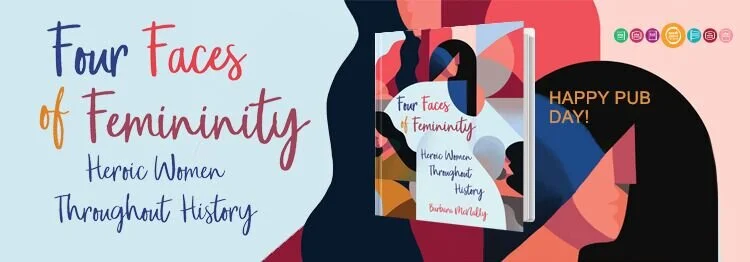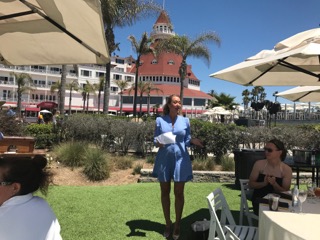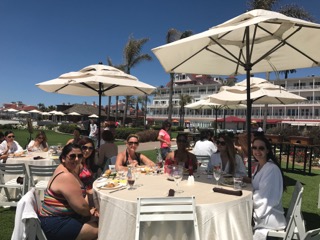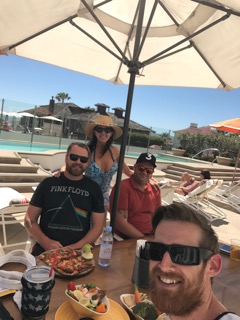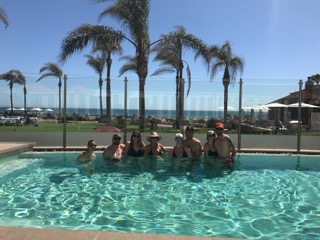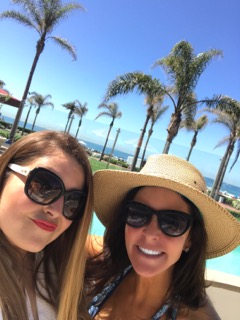If you haven't seen the new “Wonder Woman” movie yet, get yourself to a theater this instant!
I saw the film on opening weekend, and flat-out LOVED it. So I'm taking a quick detour from my series on historical women to dedicate a post to every girl's favorite superhero. And she's a superhero with staying power. Ms. Magazine put Wonder Woman on the cover of its inaugural issue in 1972, nominating her for president, and she (temporarily) served as a U.N. ambassador! She may not be real, but of all the fictional characters in the world, Wonder Woman is among the most recognized, beloved, and inspiring.
I promise not to dish out spoilers, but do want to talk about why the new film is groundbreaking and historically significant. (And uplifting and spectacular and just plain fun!)
Gal Gadot's Wonder Woman
Although die-hard fans may know her from the DC comic books and older gals watched her on the Lynda Carter TV series, we first met Israeli actress Gal Gadot's version of Wonder Woman in the 2016 film “Batman v Superman.” (Gadot spent two years in the Israeli Defense Forces, so you know she's a true warrior at heart! ) She played a bit part in that story, but the new Patty Jenkins-directed film focuses exclusively on her rich, magnetic character.
“Wonder Woman” begins by exploring our beloved hero's backstory, which starts on the idyllic island of Themyscira among her Amazonian sisters. Her given name is Diana, and she's a rebellious child eager to learn to fight despite her mother's protestations. When an American spy named Steve Trevor (played by Chris Pine) crashes near the island and tells Diana about the horrors of World War I, she feels compelled to leave her peaceful home and try to stop the war. Having never seen a man, much less a bustling city the size of London, Diana is amazed and overwhelmed by everything she's missed. Along with Trevor and a band of unlikely companions, she sets out to kill Ares—the Greek god of war—who she believes is fueling the endless, brutal fighting.
The movie is absolutely mesmerizing from start to finish! The Amazonian battle scenes made my heart pound; it was so inspiring to see fierce women warriors kicking serious butt. There were plenty of stellar special effects and plot twists, but also deeply touching and adorably funny scenes. In fact, an aspect of the script that has drawn loads of praise is that this Wonder Woman isn't just a ruthless fighting machine; She's got a huge heart and tons of empathy. Many superhero flicks focus on explosions and intrigue, but fail to capture the main character's human side. Director Patty Jenkins made sure her hero was relatable, authentic, and utterly enchanting. This Wonder Woman truly is half Warrior, and half Lover!
What's the big deal?
Wondering why this film has nabbed so many headlines? Well, for starters, there has never been a Wonder Woman movie. Ever! The comics were launched 73 years ago, the character has been beloved ever since, and yet Hollywood resisted creating a solo film for her. We've had seven Superman movies since 1978 and eight Batman films. Studios were even willing to bank on obscure male comic book heros like Ant Man and Deadpool! But despite multiple false-starts, no one ever managed to get a Wonder Woman film off the ground.
Until now.
Hollywood has long been prejudiced against both female directors and female action leads, and this new film boasts both. It wasn't until the “Hunger Games” series proved that a strong, woman-fronted action franchise could make mega-bucks that Hollywood began to sit up and pay attention. And their gamble paid off: On its first weekend in theaters, “Wonder Woman” grossed $103.3 million, the biggest opening ever for a female director. Overseas, the movie also won the weekend with $125 million from 55 markets for a global total of $228.3 million, including debuting at #1 in China! Beyond the numbers, the success of this film is significant because it portrays an independent-minded, brave, determined warrior woman who is more interested in ending battles than fighting them. She's the kind of hero that captures the hearts of little girls and grown women alike. She's someone we admire and respect, but would also love to invite out for a glass of wine! She's the perfect balance of lover and fighter, the woman we want to be and also want to befriend. Don't believe me? Get out and see the movie yourself! You'll get to see a groundbreaking and thoroughly enjoyable film, AND your dollars count as your vote. The more of us who pay to see films like this in theaters, the more Hollywood will be open to writing and producing great movies that put women characters front and center!
